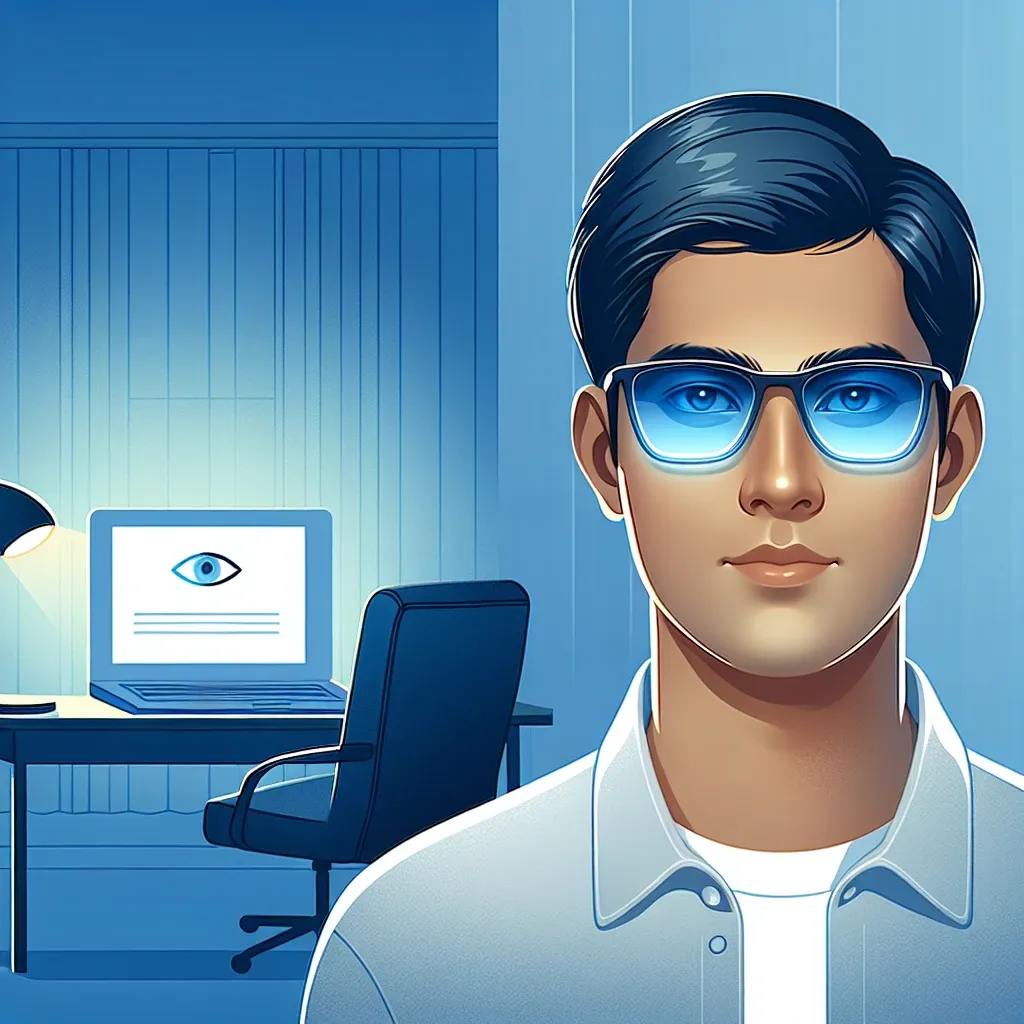Introduction
In our fast-paced digital world, many of us spend countless hours in front of screens, whether it’s for work, leisure, or socializing. This has led to a significant increase in reports of eye strain, fatigue, and discomfort. One of the primary culprits behind these issues is the blue light emitted from devices such as laptops, tablets, smartphones, and televisions. In this article, we’ll explore how blue-light filters can help reduce eye strain and improve overall visual comfort.
Understanding Blue Light
Blue light is part of the visible light spectrum, which ranges from violet to red. It has a short wavelength and higher energy than other visible light colors. While exposure to blue light during the day can be beneficial—helping regulate sleep cycles and boost alertness—excessive exposure, particularly in the evening, can lead to digital eye strain and disruption of sleep patterns.
The Impact of Blue Light on Eye Health
Studies have shown that prolonged exposure to blue light can cause:
- Digital Eye Strain: Symptoms include dryness, irritation, blurred vision, and headaches.
- Disruption of Sleep: Blue light can interfere with melatonin production, making it harder to fall asleep.
- Potential Retinal Damage: Some research suggests that overexposure could contribute to retinal damage over time.
What Are Blue-Light Filters?
Blue-light filters are tools designed to reduce the amount of blue light emitted from screens. They can come in various forms:
- Screen Protectors: Physical filters applied directly to the screen.
- Software Solutions: Applications that adjust the color temperature of your screen.
- Specialized Glasses: Lenses that block or absorb blue light.
How to Use Blue-Light Filters
Implementing blue-light filters into your routine can be straightforward. Here’s how:
1. Choose the Right Filter
Depending on your needs, you can select from different types of blue-light filters. If you primarily work on a computer, software solutions like f.lux or built-in features like Night Shift (on Apple devices) can be easy to use. For those who want physical protection, screen protectors or specialized glasses might be better options.
2. Adjust Your Device Settings
Many devices now offer built-in settings to reduce blue light emissions. Here’s how to enable these features:
- Windows: Go to Settings > System > Display, and toggle on Night Light.
- Mac: Go to System Preferences > Displays, then click on the Night Shift tab.
- iPhone/iPad: Access Settings > Display & Brightness > Night Shift.
- Android: Settings > Display > Night Light or Blue Light filter options.
3. Wear Blue Light Blocking Glasses
If you prefer a more physical approach, investing in a pair of blue light blocking glasses can be beneficial. Look for glasses that are specifically designed to filter blue light and ensure they fit comfortably.
Benefits of Using Blue-Light Filters
Incorporating blue-light filters into your daily routine can offer several advantages:
- Reduced Eye Strain: A significant decrease in symptoms associated with digital eye strain.
- Improved Sleep Quality: Better melatonin production can lead to more restful sleep.
- Enhanced Visual Comfort: A more pleasant viewing experience, especially during extended use.
Additional Strategies to Reduce Eye Strain
While blue-light filters are essential, they are not the only solution. Consider these additional strategies:
The 20-20-20 Rule
To help combat eye strain, follow the 20-20-20 rule:
- Every 20 minutes, look at something 20 feet away for at least 20 seconds.
Proper Lighting
Ensure your workspace is well lit. Position light sources to minimize glare on your screen.
Regular Eye Exams
Schedule regular check-ups with your optometrist to ensure your eyes are healthy and to get personalized recommendations.
Stay Hydrated
Drink plenty of water throughout the day to keep your eyes moist and reduce dryness.
Common Misconceptions
Blue Light is the Only Culprit for Eye Strain
While blue light plays a role, other factors such as screen flicker, glare, and poor posture can also contribute to eye strain.
All Blue-Light Filters Are the Same
Not all blue-light filters are created equal. Some may be more effective than others, so it’s essential to research and choose wisely.
Conclusion
Reducing eye strain in our digital age is crucial for maintaining overall eye health and well-being. By understanding the impact of blue light and utilizing blue-light filters, along with adopting healthy screen habits, you can significantly enhance your visual comfort. Remember, it’s not just about filtering blue light; it’s about creating a balanced approach to screen time that prioritizes your eye health.







